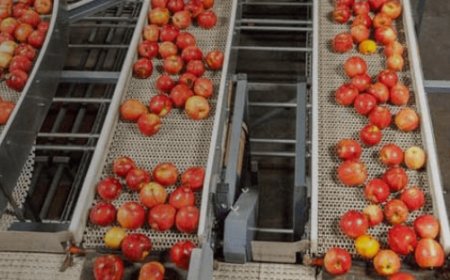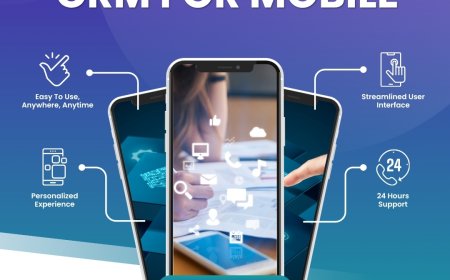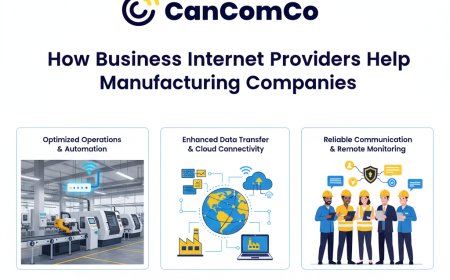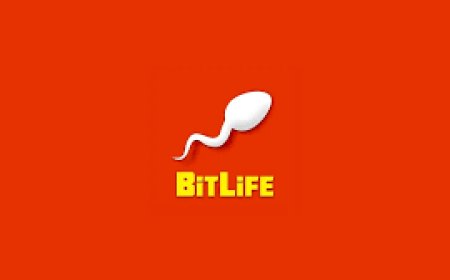How to Tour Bureau of Engraving Western Currency Facility
How to Tour the Bureau of Engraving and Printing Western Currency Facility The Bureau of Engraving and Printing (BEP) is the federal agency responsible for designing and producing all U.S. paper currency. While most visitors are familiar with the iconic BEP facility in Washington, D.C., fewer know about its equally impressive Western Currency Facility in Fort Worth, Texas. This state-of-the-art pl
How to Tour the Bureau of Engraving and Printing Western Currency Facility
The Bureau of Engraving and Printing (BEP) is the federal agency responsible for designing and producing all U.S. paper currency. While most visitors are familiar with the iconic BEP facility in Washington, D.C., fewer know about its equally impressive Western Currency Facility in Fort Worth, Texas. This state-of-the-art plant produces over 40% of all U.S. paper currency and offers a free, public tour that provides an unparalleled glimpse into the intricate, high-security process of printing money. Understanding how to tour the Bureau of Engraving and Printing Western Currency Facility is not just a matter of logistics—it’s an opportunity to witness one of the most secure and technologically advanced manufacturing operations in the world. Whether you’re a history buff, a finance enthusiast, or simply curious about how everyday currency is made, this tour delivers an educational, engaging, and memorable experience.
Unlike many government facilities, the BEP Fort Worth location is open to the public and designed with accessibility and safety in mind. The tour is entirely free, requires no admission fee, and is suitable for all ages. However, due to its popularity and strict security protocols, advance planning is essential. This guide will walk you through every step of securing, preparing for, and enjoying your visit—from booking your reservation to navigating the facility, understanding what you’ll see, and maximizing your learning experience. By the end of this comprehensive tutorial, you’ll have all the knowledge needed to confidently plan your visit and appreciate the art, science, and security behind U.S. currency production.
Step-by-Step Guide
Step 1: Confirm Eligibility and Tour Availability
Before beginning your reservation process, verify that you are eligible for a tour. The Western Currency Facility in Fort Worth welcomes individuals of all ages, including children. However, all visitors must have a valid government-issued photo ID (such as a driver’s license, passport, or state ID) to enter the facility. Non-U.S. citizens must present a valid passport. Visitors under the age of 18 must be accompanied by an adult. There are no exceptions to this rule.
Guided tours are offered Monday through Friday, excluding federal holidays. Tours begin at 9:00 a.m., 10:00 a.m., 11:00 a.m., 1:00 p.m., 2:00 p.m., and 3:00 p.m. Each tour lasts approximately 45 to 60 minutes and accommodates up to 20 people. Because of limited capacity, reservations are required and fill up quickly—often weeks or months in advance. Walk-ins are not permitted under any circumstances.
Step 2: Book Your Tour Reservation
To secure your spot, you must book through the official Bureau of Engraving and Printing reservation system. Visit www.moneyfactory.gov and navigate to the “Tours” section. From there, select “Fort Worth, TX” as your destination. You will be directed to the reservation portal, where you can choose your preferred date and time slot.
Each reservation request must include the full legal name, date of birth, and country of citizenship for every person in your group. You may reserve up to 10 tickets per request. If your group exceeds 10 people, you must submit multiple requests on separate days or coordinate with other groups. Submit your request at least 21 days in advance for the best chance of securing your preferred time. Last-minute cancellations may open slots, so check the portal frequently if your ideal date is unavailable.
After submitting your request, you will receive an automated confirmation email. This email contains your reservation number, date, time, and instructions for check-in. Save this email and print a copy or have it accessible on your mobile device. You will need to present it along with your ID at the security checkpoint.
Step 3: Prepare for Security Screening
Security at the Western Currency Facility is stringent and comparable to airport screening. All visitors must pass through a metal detector and have their belongings inspected. The following items are strictly prohibited and will not be allowed inside:
- Any type of camera, video recorder, or smartphone (including smartwatches with camera functions)
- Laptops, tablets, or other electronic devices
- Weapons of any kind, including pocket knives and pepper spray
- Large bags, backpacks, or purses (only small clutch bags or waist packs under 8” x 10” are permitted)
- Food, beverages, or chewing gum
- Umbrellas or tripods
Lockers are available at the visitor center for storing prohibited items, but space is limited. It is strongly recommended to arrive with only essentials. Avoid wearing bulky clothing or shoes with metal components to expedite the screening process. If you have a medical device such as a pacemaker, notify security personnel upon arrival—they will provide alternative screening procedures.
Step 4: Arrive Early and Check In
You must arrive at least 30 minutes before your scheduled tour time. The visitor entrance is located at 1411 E. Lamar Blvd, Fort Worth, TX 76102. Parking is free and plentiful in the designated visitor lot directly in front of the facility. Follow signs for “Public Tours.”
Proceed to the Visitor Center lobby and present your confirmation email and government-issued photo ID to the security officer. Your group will be verified against the reservation list. If your group is late, you risk forfeiting your reservation. The facility does not hold spots for late arrivals.
Once verified, you will be asked to pass through the security checkpoint. After screening, you’ll be directed to the waiting area where a tour guide will meet your group. Do not attempt to wander the facility independently—tours are guided and all areas are restricted to authorized personnel only.
Step 5: Experience the Tour
Your guided tour begins with a brief orientation video that explains the history of U.S. currency and the role of the Bureau of Engraving and Printing. You’ll then proceed into the production floor via a climate-controlled, elevated observation walkway. From this vantage point, you’ll witness the entire currency production process:
- Offset Printing: Large sheets of paper are printed with intricate designs using high-speed presses. The green ink used for the back of bills is applied here.
- Intaglio Printing: The portrait, numerals, and border details are printed using engraved plates under extreme pressure. This process creates the raised texture you feel when touching a bill.
- Overprinting: Serial numbers, Treasury seals, and district identifiers are added using specialized letterpress machines.
- Cutting and Inspection: Sheets are cut into individual bills and fed through automated inspection systems that detect misprints, smudges, or alignment errors. Bills that fail inspection are destroyed on-site.
Throughout the tour, your guide will explain the security features embedded in U.S. currency, such as color-shifting ink, watermarks, security threads, and microprinting. You’ll also learn how the BEP combats counterfeiting through continuous innovation and collaboration with law enforcement agencies.
At the end of the tour, you’ll visit the gift shop, where you can purchase official BEP souvenirs, including uncirculated currency sheets, commemorative items, and educational materials. Note: You cannot purchase individual bills from the facility—these are sold only through banks and financial institutions.
Step 6: Departure and Post-Tour Resources
After your tour concludes, you may exit the facility through the same entrance. If you have stored items in the lockers, retrieve them before leaving. You are welcome to visit the adjacent Fort Worth Nature Center or the nearby Fort Worth Stockyards, both within a 10-minute drive.
To deepen your understanding after your visit, download the BEP’s free educational app, “Currency Quest,” which includes interactive games and quizzes about currency design and security. You can also sign up for the BEP’s monthly newsletter to receive updates on new currency designs, tour availability, and educational resources.
Best Practices
Plan Ahead—Book Early
The most critical best practice for a successful tour is to book as early as possible. Reservations open 90 days in advance, and slots for popular dates—especially during summer months and school breaks—fill within hours. Set a calendar reminder to book exactly 90 days before your desired visit. Avoid waiting until the last minute; even cancellations rarely free up enough space for walk-in demand.
Choose the Right Time
While all tour times are equally informative, consider your group’s needs when selecting a slot. Morning tours (9:00 a.m. or 10:00 a.m.) tend to be quieter and less crowded, making them ideal for families with young children or seniors who may tire easily. Afternoon tours (1:00 p.m. or 2:00 p.m.) may be better for groups arriving from out of town, as they allow time for travel and lunch. Avoid the 3:00 p.m. tour if you have a long drive ahead, as it may extend past your preferred travel window.
Prepare Your Group
If you’re bringing a group—especially children or students—prepare them in advance. Explain the security rules, the importance of silence on the observation deck, and the fact that no photos are allowed. This reduces confusion and ensures a smooth experience for everyone. Consider assigning a “group leader” to keep track of everyone during check-in and movement through the facility.
Dress Appropriately
Wear comfortable, closed-toe shoes. The observation walkway is long and requires standing for extended periods. Avoid high heels, sandals, or flip-flops. Dress in layers—the facility is climate-controlled and may feel cool, especially near the printing presses. A light jacket or sweater is recommended.
Engage with the Guide
Don’t be afraid to ask questions. The tour guides are highly knowledgeable and often have backgrounds in printing, security, or history. They welcome curiosity and can provide deeper insights into the technology, history, and challenges of currency production. Prepare a few questions ahead of time, such as: “How often are new security features added?” or “What happens to damaged or worn-out bills?”
Respect the Facility and Security Protocols
The BEP is a federal facility responsible for protecting the nation’s currency. Violating security rules—such as attempting to photograph equipment or bringing prohibited items—can result in immediate removal from the facility and potential legal consequences. Follow all instructions from staff, remain with your group, and avoid touching any surfaces or equipment. Your cooperation ensures the safety and integrity of the operation.
Bring a Notebook or Use Mental Notes
Since you cannot take photos, consider bringing a small notebook to jot down interesting facts or questions that arise during the tour. Many visitors find that writing down key details—like the number of bills printed per hour or the lifespan of a $1 bill—helps reinforce learning and makes for a richer experience after returning home.
Tools and Resources
Official Bureau of Engraving and Printing Website
The primary resource for tour reservations, educational content, and facility updates is the official BEP website: www.moneyfactory.gov. This site offers downloadable brochures, historical timelines, and detailed explanations of currency features. It also includes a frequently updated calendar of tour availability and holiday closures.
Currency Quest Mobile App
Available for free on iOS and Android, the Currency Quest app transforms learning about U.S. money into an interactive game. It includes quizzes on counterfeit detection, historical currency designs, and fun facts about the printing process. Use it before your tour to build background knowledge or after your visit to reinforce what you learned.
U.S. Currency Education Website
Hosted by the Federal Reserve, www.uscurrency.gov provides comprehensive information on the design, security, and circulation of U.S. currency. It includes high-resolution images of currency features, videos on how bills are made, and downloadable lesson plans for educators.
Fort Worth Tourism Portal
The Fort Worth Convention & Visitors Bureau offers curated itineraries that include the BEP tour alongside other family-friendly attractions. Visit www.visitfw.com for recommendations on nearby dining, parking, and transportation options.
Public Library and Educational Institutions
Many public libraries offer free access to educational databases such as Britannica School and Gale In Context, which contain peer-reviewed articles on U.S. currency history and the role of the BEP. Teachers and students can use these resources to prepare for or reflect on their tour experience.
YouTube Channel: Bureau of Engraving and Printing
Although photography is prohibited on-site, the BEP maintains an official YouTube channel featuring professionally produced videos of the printing process, interviews with employees, and behind-the-scenes footage from the Washington, D.C. facility. These videos are excellent supplements to your in-person tour.
Printed Educational Kits
Request a free “Currency Education Kit” from the BEP’s education department. These kits include sample currency notes (with security features highlighted), activity sheets, and a guidebook for educators. Available upon request via the BEP website, they are ideal for classroom use or personal study.
Real Examples
Example 1: A Family’s First Visit
The Rodriguez family from Austin, Texas, booked a 10:00 a.m. tour six months in advance for their children’s summer break. Their 8-year-old daughter, Sofia, was fascinated by the color-shifting ink and asked if the bills “changed color like a chameleon.” The tour guide demonstrated the feature using a magnifying glass and explained how the ink reflects light differently at various angles. After the tour, Sofia wrote a school report titled “How Money Gets Its Magic,” which included hand-drawn diagrams of security threads and watermarks. The family later purchased an uncirculated $1 sheet from the gift shop as a keepsake.
Example 2: A High School Economics Class Trip
A teacher from Dallas ISD organized a field trip for her Advanced Economics class of 24 students. She split the group into two tours on consecutive days to accommodate the reservation limit. Prior to the visit, students studied inflation, currency design, and counterfeiting trends. During the tour, they observed the automated inspection systems that reject bills with even minor imperfections. One student noted, “I thought money was just printed randomly. Now I know every serial number is tracked and every sheet is counted.” Afterward, the class created a mock currency design competition, applying what they learned about security features.
Example 3: International Visitor Experience
A group of five university students from Germany visited the BEP Fort Worth as part of a U.S. economic studies program. They had studied U.S. monetary policy in class but had never seen currency production firsthand. “The scale of the operation was overwhelming,” said one student. “In Germany, we print on smaller presses. Seeing how the U.S. handles over 38 million notes per day was mind-blowing.” They later compared the BEP’s security protocols with those of the Bundesbank and presented their findings to their department.
Example 4: Senior Citizen Group Tour
A retirement community in Arlington arranged a bus tour to the BEP for its members. Many of the seniors had lived through currency changes, including the transition from silver certificates to Federal Reserve Notes. One visitor, 82-year-old Margaret H., recalled using $2 bills in the 1950s and was thrilled to see how modern bills are now printed with anti-counterfeiting technology she never imagined. The group left with a deeper appreciation for the economic stability the BEP helps maintain.
Example 5: Media and Documentary Filmmakers
A documentary filmmaker from PBS secured a special access agreement with the BEP to produce a segment on currency security. Although the public tour does not allow filming, the BEP granted the team limited access to non-public areas under strict supervision. The resulting 12-minute feature, “The Secret Life of Money,” aired nationally and included footage of the intaglio presses and the destruction of misprinted bills. The film is now used as a teaching tool in university economics courses.
FAQs
Can I bring my phone on the tour?
No. Smartphones, cameras, and all electronic devices are prohibited inside the production facility. This includes smartwatches with camera functions. Lockers are available to store these items before entering the security checkpoint.
Is the tour wheelchair accessible?
Yes. The observation walkway, restrooms, and visitor center are fully ADA-compliant. Elevators are available to access all levels. Notify the reservation team in advance if you require special accommodations, such as a sign language interpreter.
How long is the walking portion of the tour?
The tour involves approximately 0.25 miles of walking on a raised, elevated walkway. There are no stairs, but you will be standing for the duration of the tour. Seating is not available on the production floor.
Can I buy U.S. currency at the facility?
No. The BEP does not sell individual bills or currency to the public. You can purchase uncirculated currency sheets, commemorative products, and educational materials in the gift shop, but you cannot buy legal tender directly from the facility.
Are there restrooms available during the tour?
Yes. Restrooms are located in the visitor center before and after the tour. There are no restrooms on the production floor.
What if I’m late for my tour?
Arriving more than 15 minutes after your scheduled time may result in forfeiture of your reservation. The facility does not hold spots for late arrivals, and no refunds or rescheduling is available for missed tours.
Can I bring my pet?
Only service animals as defined by the ADA are permitted. Emotional support animals and pets are not allowed.
Do I need to be a U.S. citizen to take the tour?
No. International visitors are welcome. All non-U.S. citizens must present a valid passport for entry.
How many bills are printed per day at the Fort Worth facility?
The Western Currency Facility produces approximately 38 million notes per day, totaling over 12 billion notes annually. The majority of these are $1 and $20 bills.
What happens to damaged or worn-out currency?
Worn-out bills are collected by banks and sent to the Federal Reserve, which then destroys them. The BEP does not handle destroyed currency directly, but the tour explains the full lifecycle of a bill—from printing to retirement.
Is there a fee for the tour?
No. All tours of the Bureau of Engraving and Printing Western Currency Facility are free of charge. Be cautious of third-party websites offering “paid tour packages”—these are scams.
Can I take a group larger than 10 people?
Yes, but you must make multiple reservation requests. Each booking is limited to 10 people. You may submit separate requests for different dates or times.
What if my reservation is canceled?
Reservations may be canceled due to weather, security alerts, or facility maintenance. If this occurs, you will receive an email notification. You may rebook for a future date using the same portal.
Conclusion
Touring the Bureau of Engraving and Printing Western Currency Facility is more than a sightseeing activity—it’s a window into the foundation of the U.S. economy. From the precision of intaglio printing to the sophistication of anti-counterfeiting technology, every step of currency production reflects decades of innovation, security, and national pride. By following this guide, you’ve gained not just logistical knowledge, but a deeper appreciation for the systems that keep American money secure and trustworthy.
Whether you’re a student, a parent, a historian, or a curious traveler, this experience offers something unique: the chance to witness the invisible machinery that underpins daily commerce. The notes you handle every day are the product of meticulous craftsmanship, advanced engineering, and unwavering vigilance. Seeing this process firsthand transforms ordinary cash into an artifact of national significance.
Remember: planning ahead is non-negotiable. Book early, prepare your group, respect the rules, and engage fully with the experience. The BEP Fort Worth is not just a factory—it’s a living museum of economic history. And with the right preparation, your visit will be as seamless as the $20 bill you’ll leave with in your wallet.
Don’t just see money. Understand it. Visit the Bureau of Engraving and Printing Western Currency Facility—and see how the United States prints its future, one bill at a time.

























